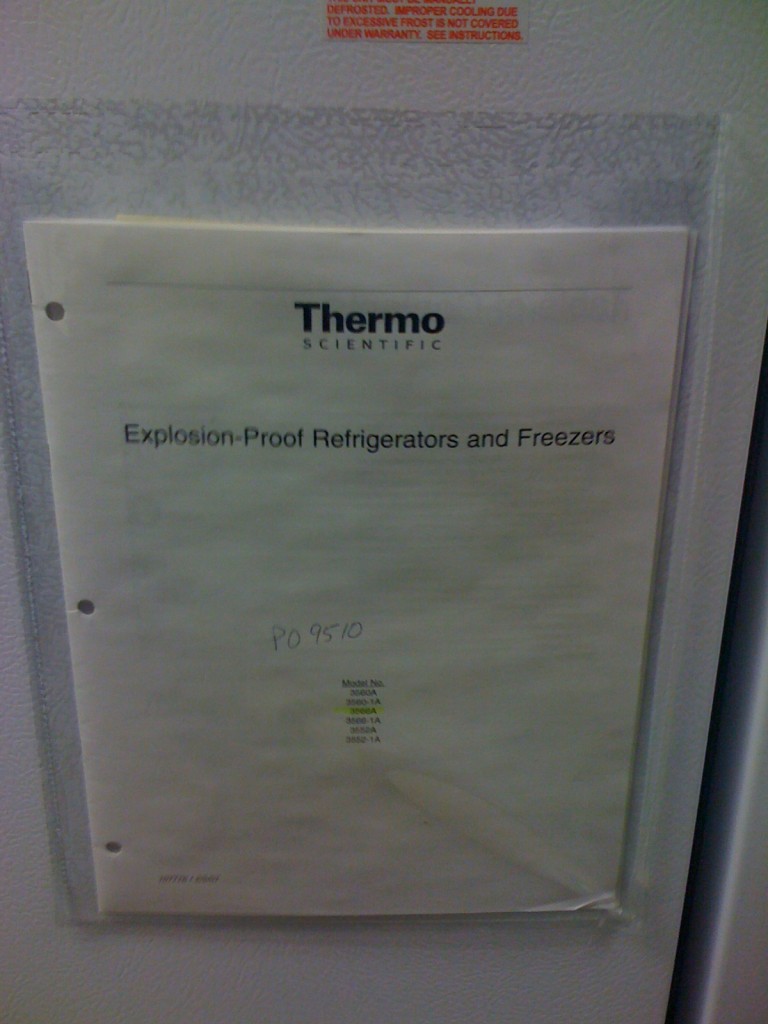Watching some of the last equipment from our chemistry labs head out the door today with the people who won the auctions, I noticed this:
My first thought was, I know someone who’d see about that. My money would be that Boomerite beats refrigerator. If we were located in Idaho, I would have bid on this freezer just to put that to the test :)


It might be “explosion proof†in that it was located in a classified combustible gas area and designed be to not be capable of producing a spark which could ignite gas if present.
Still, no less fun blowing it up.
But would Indiana Jones bet his life on it?
It just means that it’s rated for use in hazardous environments where vapors/dusts might present an explosion hazard.
In reality, it’s mostly just a scam to make an otherwise $500 refrigerator cost $3,000. :)
The electric valves (solenoids) are external to the enclosure so that gas build up inside will not get set up.
I know I would be more than happy to submit it to the Idaho stress test. Only catch is cleaning all that crap up afterwards.
B
We’ve done refrigerators, various vehicles, caskets, a boat, and other miscellany here in PA…would have been more than happy to run an integrity check on it for ya at our next shoot!
What the others said about dust and gas explosions.
What Barron said about the Idaho stress test.
So why didn’t they label it as “intrinsically safe?” Or is that only used for radio equipment like walkie-talkies or cellphones?
Incidentally, one of the few valid reasons for a property owner to ban firearms would be because they aren’t intrinsically safe for the purpose of generating sparks…
The term “explosion proof” is often used for enclosures, such as a NEMA 7 rating, while “intrinsically safe” refers to the circuitry.
Thought that might be the reason.